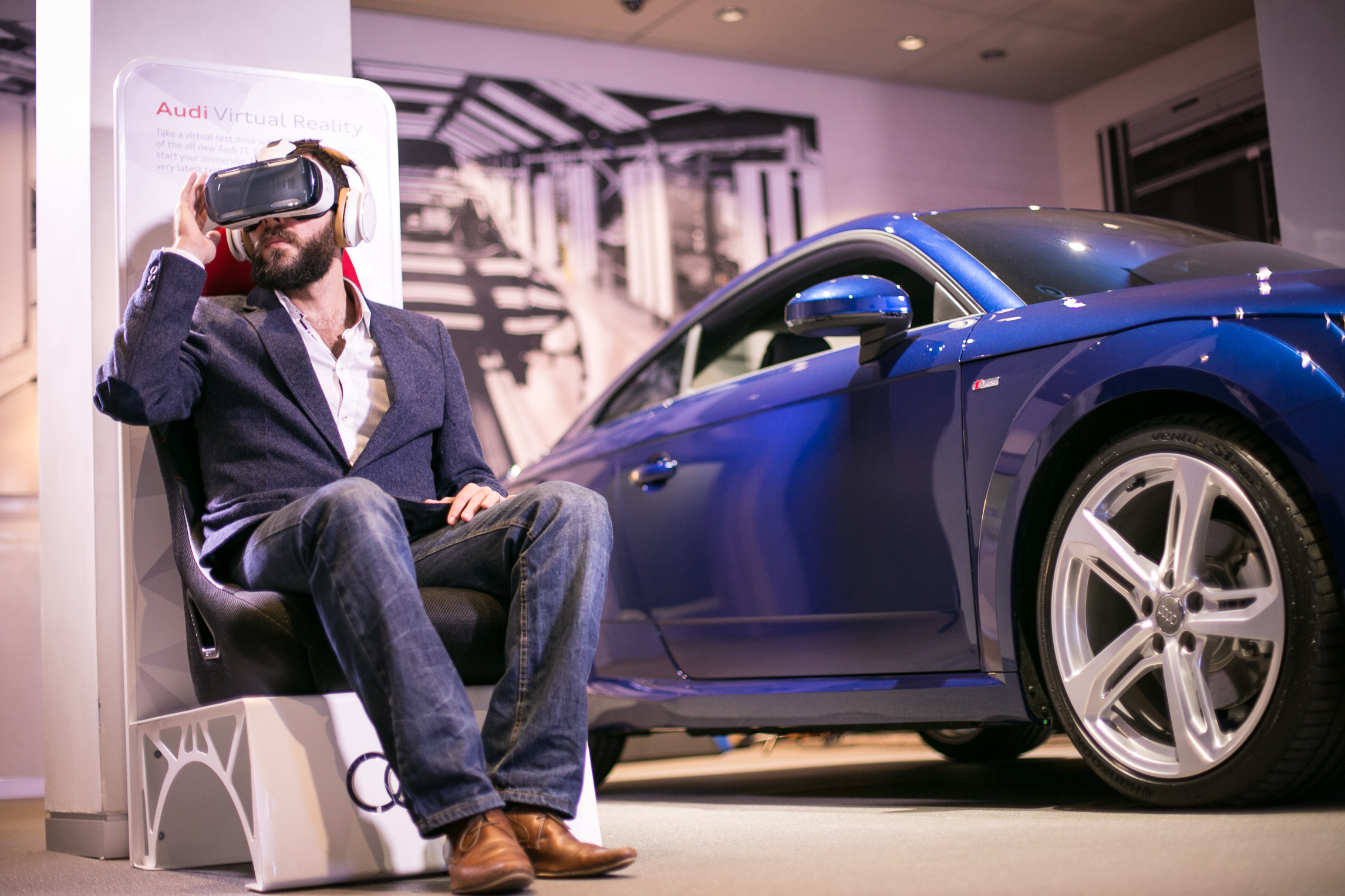Investments in VR and AR based software for car infotainment systems will grow by 35 billion by 2020.
If you had to identify the industrial sectors that have undergone the most drastic changes in the last few years, automotives would undoubtedly rank high. This is an industrial sector that for over a decade has been pushed to change on multiple fronts—social, economic and technological. Here are a few of those key areas:
- Behavioral: demographic growth and the advent of smart cities means moving away from the individual use of cars and toward collective approaches (like carpooling and car sharing)
- Environmental: cars tend to adopt green technologies, changing key marketing words and taking on a new concept of “performance~…which is more than how they handle on the road
- Technological: not only electronics, 4.0 technologies, media centers and sensors… but also electric, hybrid and even self-driving cars
- New players: Google and Appler are investing in self-driving cars, and even Amazon looks poised to enter the market. The traditional brands are coming together in larger production groups (Fiat, Chrysler, GM…) with the aim to invest more in research
The new role of Car dealers: the moment of purchase
The need to buy a car is less strong that a few decades ago, so the profit margins are diminishing, as research on the US market is showing. Yet consumers are no less demanding—maybe the opposite actually. They’re better informed, more aware and critical, and have clear ideas of what they want to buy. Nowadays, cars are bought before people even come to the dealership, but this doesn’t mean that the dealerships are less important. It’s just that their CTA is more aggressive and their goal becomes purely to close deals. So where at one time it was the place to go to get information and evaluate things, today’s it’s the place for the final confirmation, where interest is transformed into a concrete commercial deal. That interest is what virtual and augmented reality can help to grow during the pre-purchase phase.
Why immersive AR/VR technologies are a game changer in automotives
You need to create a strong, innovative experience that can put down any last resistance. So it’s basically “test driving“ and “customization” in their more evolved forms. But test drives are expensive, and as mentioned, margins are slim. So users are asking for something that is harder for brands to deliver with their smaller budgets. In that sense, immersive technologies are giving a new boost to experiential marketing around cars.
One good example is the Audi virtual showrooms in London, where a solid 50% of sales were made with the help of VR technology and no physical test drive.

We are witnessing the birth of a very interesting side economy where specific immersive technology is being developed for cars and dealers.
How to create an immersive automotive product
First of all, start with a need, a goal, a product and a strong point. You need to know all those to design an experience. We can identify 3 macro categories:
- Communicating technology and performance: talking about technology isn’t easy, especially doing it in an empathetic, engaging way. VR helps us by expanding hi-tech content marketing and creating ad hoc interactions through a headset. Good examples of this trend are BMW X’s holographic experience and Mercedes’ VR experience.
- Customization: the target market is demanding and loves personalizing their products. But distribution can’t be so detailed and some products have long production times. In addition, traditional web configurators seem limited. This is the problem Tesla has resolved with is Virtual Showroom, which gives plenty of customization options.
- Novel uses: some ideas are truly futuristic, like voice assistants, holographs and infotainment, as well as prototypes and concept cars. They’re needed for studies and research, and also as branding activity.
But all of these goals have a common need—to bring people into the store. Virtual Reality is an excellent and attractive element because it lets people experience something unique that’s perfect inside a store. And they can even get an advance preview of the unique feeling they’ll get in the point of sale if AR is integrated as well. This might be through branded gadgets or cardboard headsets that grab a customer’s attention and encourage them to go to the store for the full experience.
Leo Mauriello
I'm characterized by a great curiosity, that drives me to achieve important goals and new challenges. I'm a web and digital marketer mainly focused on digital strategy and social advertising with design, programming and digital analyst skills.
